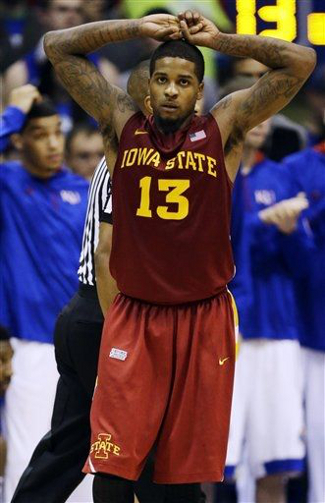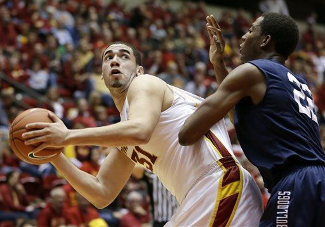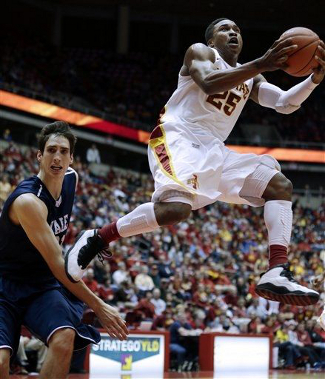Texas Longhorns (8-7 overall, 0-2 Big 12) at Iowa State Cyclones (10-4, 0-1)
Hilton Coliseum | Ames, IA | Tip: 1 P.M. CT | TV: ESPNU
LRT Consecutive Game #236
The Texas Longhorns are 0-2 in Big 12 Conference play for the first time under Rick Barnes, sitting just a game above .500 as they travel to Hilton Coliseum to face a tough Iowa State Cyclones squad this afternoon. The Longhorns are at risk of going 0-3 in conference play for the first time since 1997-98, the last season for Tom Penders on the 40 Acres. After dropping games to Missouri, Kansas, and Oklahoma to open their conference slate that season, the Horns finished 10th in the league with an ugly 6-10 mark.

Korie Lucious and ISU were stunned on Wednesday
(Photo credit: Orlin Wagner/Associated Press) 
Georges Niang has emerged as a star in Ames
(Photo credit: Charlie Neibergall/Associated Press) 
Texas must turn Tyrus McGee into a driver
(Photo credit: Charlie Neibergall/Associated Press) |


